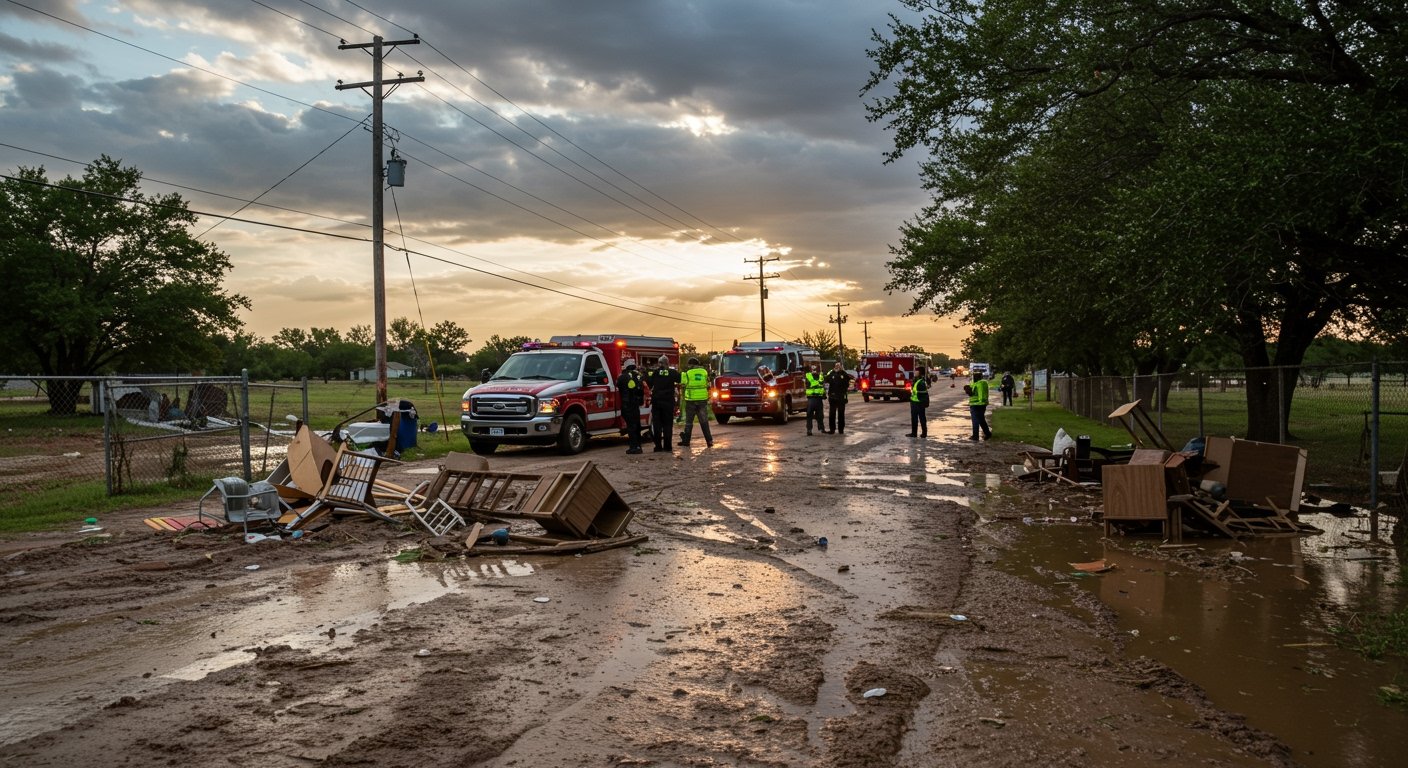Austin, Texas – Governor Greg Abbott has officially renewed the state’s disaster proclamation for several Texas counties grappling with the protracted consequences of severe storms and flooding that initially struck the region in late March.
The renewal was formalized on May 28, 2025, extending the declaration originally issued in response to the widespread and severe weather event that commenced on March 27, 2025. The counties specifically covered by this renewed proclamation are Cameron, Hidalgo, Starr, and Willacy, all located in South Texas.
Background of the Initial Disaster
The severe weather incident, which began on March 27, 2025, brought with it a potent mix of heavy rainfall, flash flooding, and hazardous wind gusts. The immediate aftermath prompted Governor Abbott to issue the initial disaster proclamation just two days later, on March 29, 2025. That initial declaration specifically named Cameron, Hidalgo, Starr, and Willacy counties, citing the observed outcomes of the severe weather: widespread and severe property damage, reports of injury, and even loss of life across the affected areas.
The conditions described necessitated urgent state intervention to support local response and recovery efforts, setting the stage for the subsequent renewals as impacts persisted.
Legal Basis and State Powers Activated
The act of renewing the disaster proclamation on May 28, 2025, was executed under the authority granted by Section 418.014 of the Texas Government Code. This section empowers the Governor to continue a state of disaster for a period not to exceed 30 days unless renewed.
The renewed declaration carries significant weight, primarily by authorizing the use of all available resources of state government and relevant political subdivisions of the state. This authorization is explicitly made in accordance with Section 418.017 of the Texas Government Code, which outlines the Governor’s powers during a declared disaster to utilize and command state resources as reasonably necessary to cope with the emergency.
Furthermore, the proclamation allows for potential temporary relief from certain state-level regulations. As stipulated by Section 418.016 of the Texas Government Code, the declaration permits the suspension of regulatory statutes that could hinder or delay necessary action to respond to the disaster. Any such suspension, however, requires written approval from the Office of the Governor, ensuring careful consideration before existing laws or rules are set aside, even temporarily.
Implications for Affected Counties
The extension of the disaster status is crucial for the four listed counties – Cameron, Hidalgo, Starr, and Willacy. It signifies the state’s continued recognition of the ongoing challenges faced by these communities more than two months after the initial event.
By renewing the proclamation, the state government underscores its commitment to providing assistance that may still be required for recovery and rebuilding efforts. This could involve various forms of support, ranging from facilitating debris removal and infrastructure repair to coordinating resources for displaced residents or supporting local emergency services overwhelmed by the scale of the damage.
The powers afforded by the declaration, particularly the ability to mobilize state resources and potentially suspend regulations, provide flexibility needed to address evolving needs on the ground effectively. For instance, suspending certain environmental regulations might expedite necessary clean-up activities, or waiving specific transportation rules could hasten the delivery of essential supplies.
Ongoing Recovery Efforts
The renewal on May 28, 2025, highlights that the impact of the severe weather event that began on March 27, 2025, is far from over for the residents and authorities in Cameron, Hidalgo, Starr, and Willacy counties. Recovery from incidents involving widespread and severe property damage, as well as addressing the human toll reflected in reports of injury and loss of life, is often a prolonged process.
The state’s action ensures that the mechanisms established under the initial declaration remain in place, providing a framework for continued state support as communities work towards full recovery.
Governor Abbott’s decision, rooted in Sections 418.014, 418.016, and 418.017 of the Texas Government Code, serves as a formal acknowledgement of the persistent need for state assistance and a directive for relevant agencies and local subdivisions to maintain a coordinated response posture.






